
Thank you to all our panelists, presenters and attendees!
The beauty of harmony and collaboration is their ability to harness dissonance in the service of peace and agreement. This idea rings especially true in a present reality marked as much by conflict as by community. Both human-made and natural disasters can foster moments of togetherness and altruism. This same dynamic plays out in learning environments, where friction can serve as a catalyst to inspire change: we often learn through productive conflict, discomfort, and respectful engagement with opposing viewpoints.
Virtual artwork on display (Ongoing):
Artwork and posters on display in Carter Hall:
Art & Design Department, Lecturer
the specifics might be vague is visual exploration of the role images play in how and what we remember. The images are created using analog photographs from family photo albums overlaid with an abstraction and pixelization of the image, creating tension between the memory we hold and the one we craft. Each time we access a memory, we rewrite the moment. The very act of remembering alters the facts. This process, called reconsolidation, makes the image a bit more blurry and malleable, a retelling of the last time we shared the memory. Anything can alter our version of events, particularly in our increasingly artificial world.
Each retrieval of a memory is a portrait of our current self, combining with the changing ways we perceive our world. Ideas of truth and documentation have long entangled the history of photography. The photographer both conceals and reveals stories of our lives, curating the images of our lives. Images often spark memories and stories, overwriting any truth we may seek. With the increasing ease in the use of artificial intelligence and digital manipulation, images no longer spark your real memory but help you create your desired memory. Using analog photographs from my family archive, I re-record them as digital files, replicating the reconsolidation process. I pixelate each image by hand, blurring some areas while others remain visible, shaping the image into a new narrative. Memory is flexible and always changing; the only constant are the stories we tell ourselves.
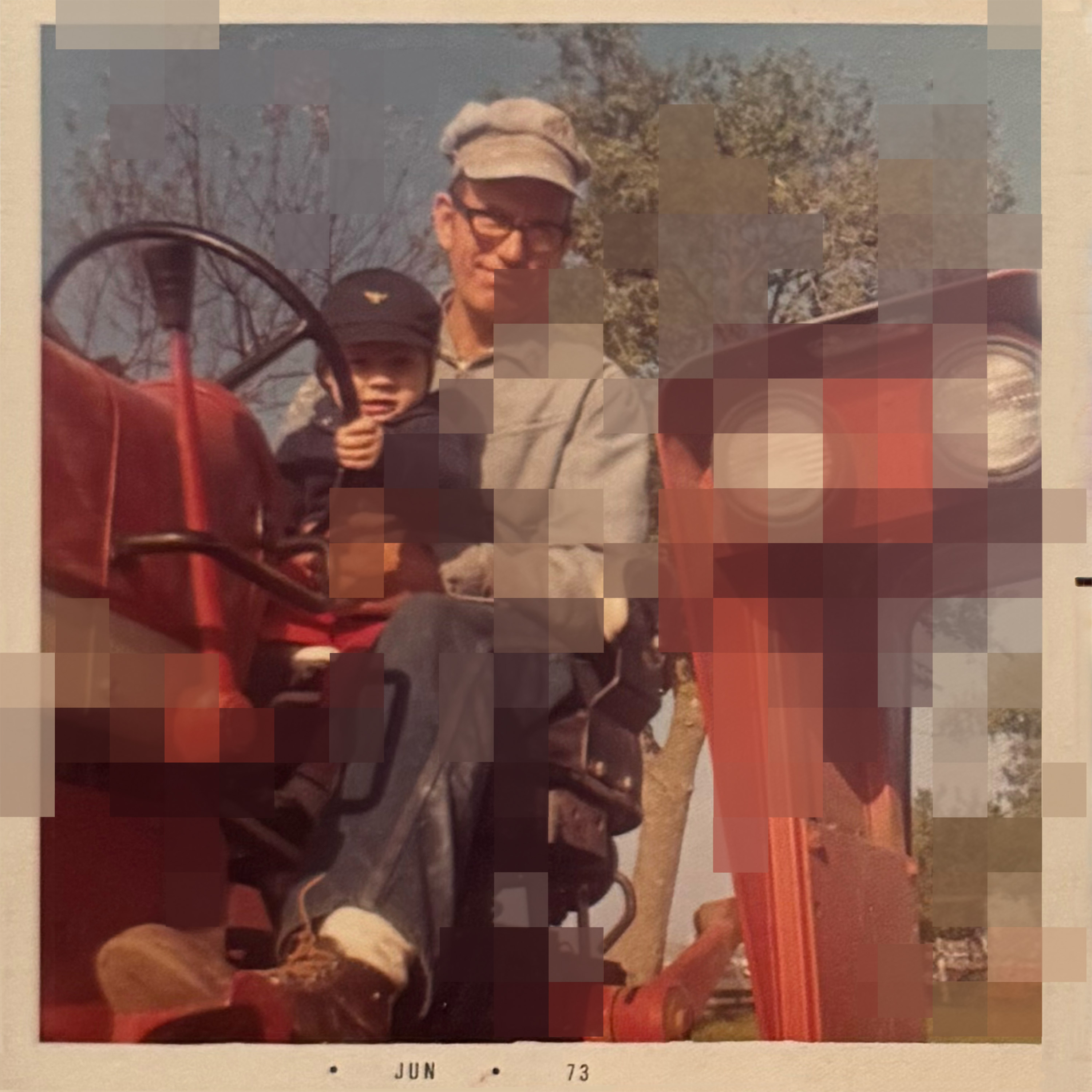
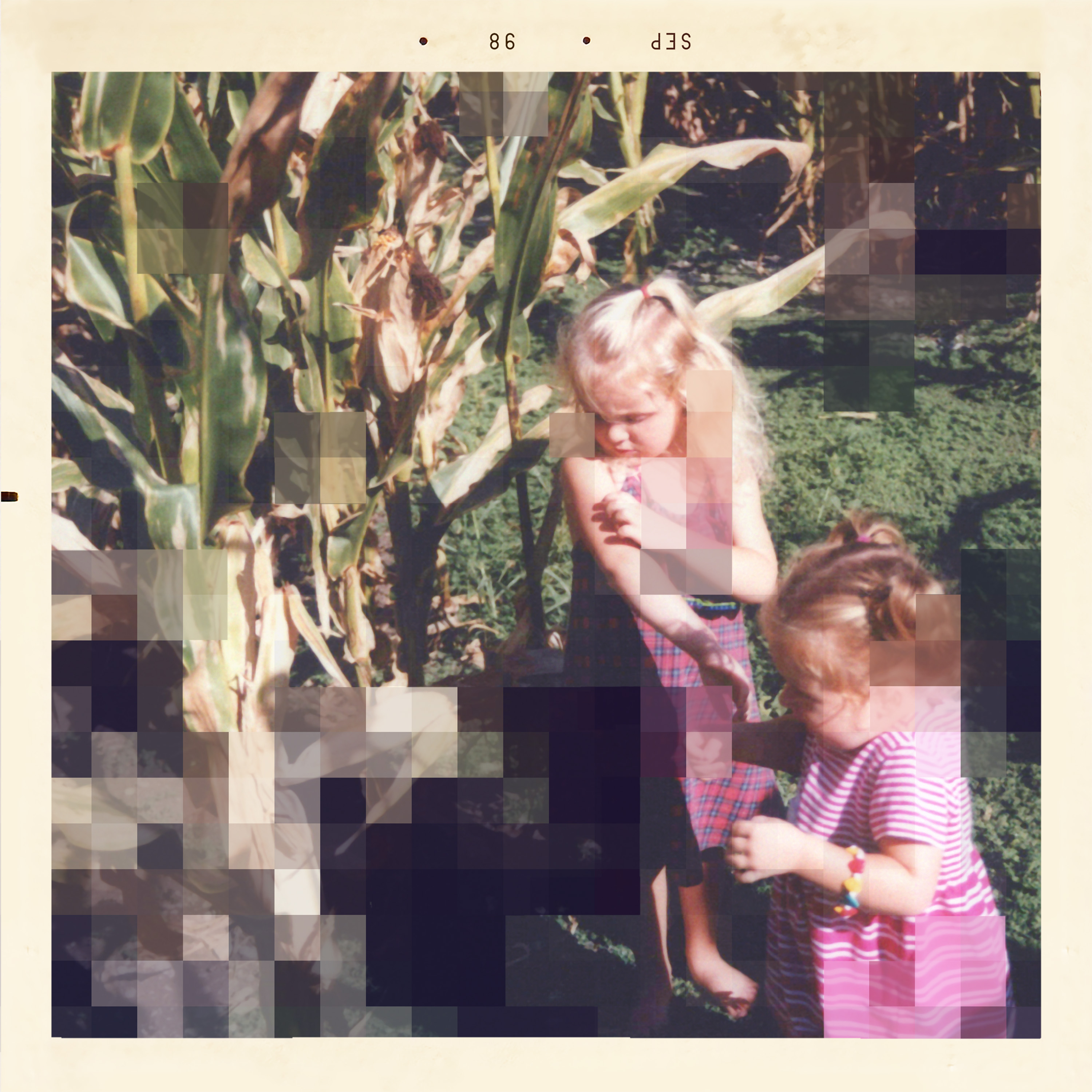
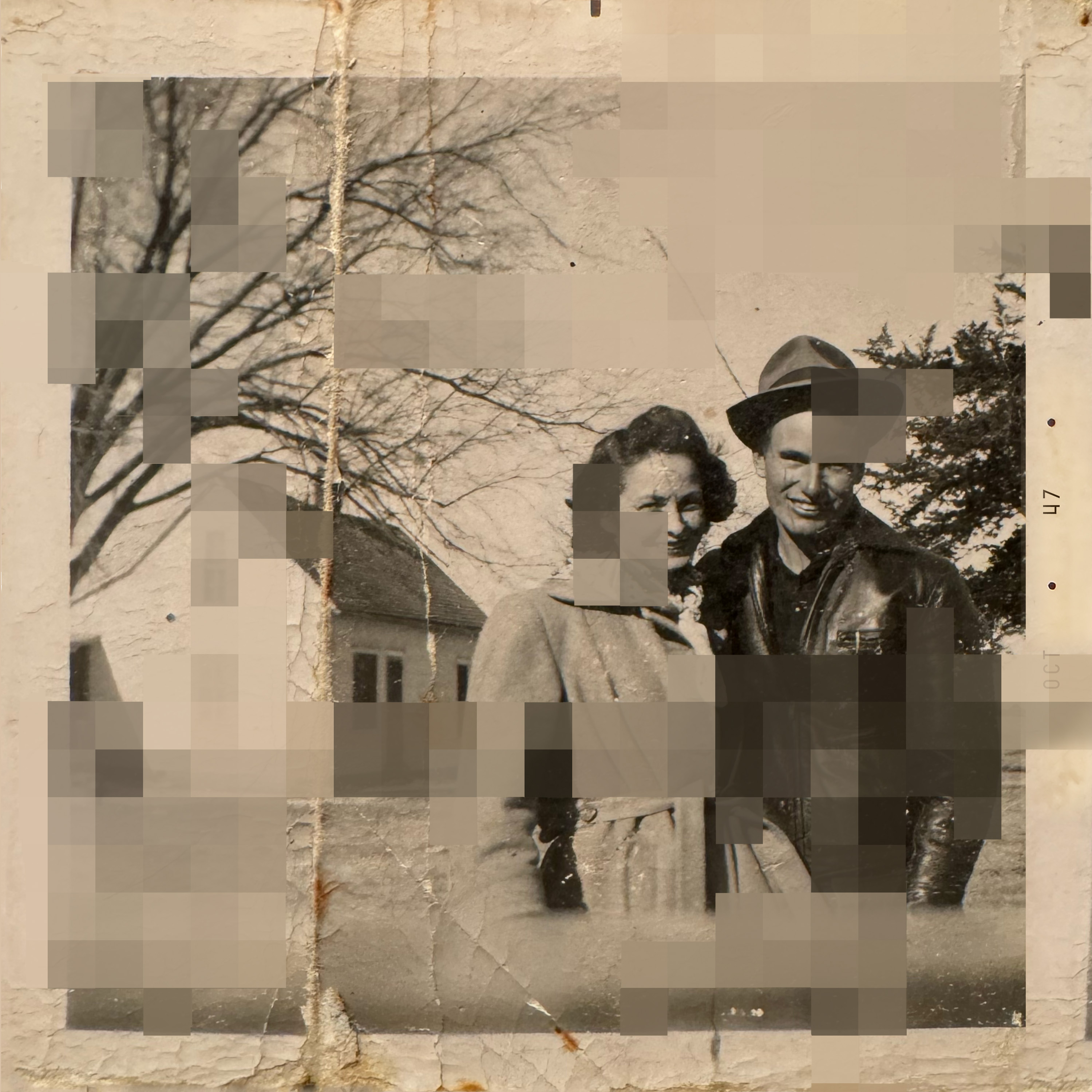
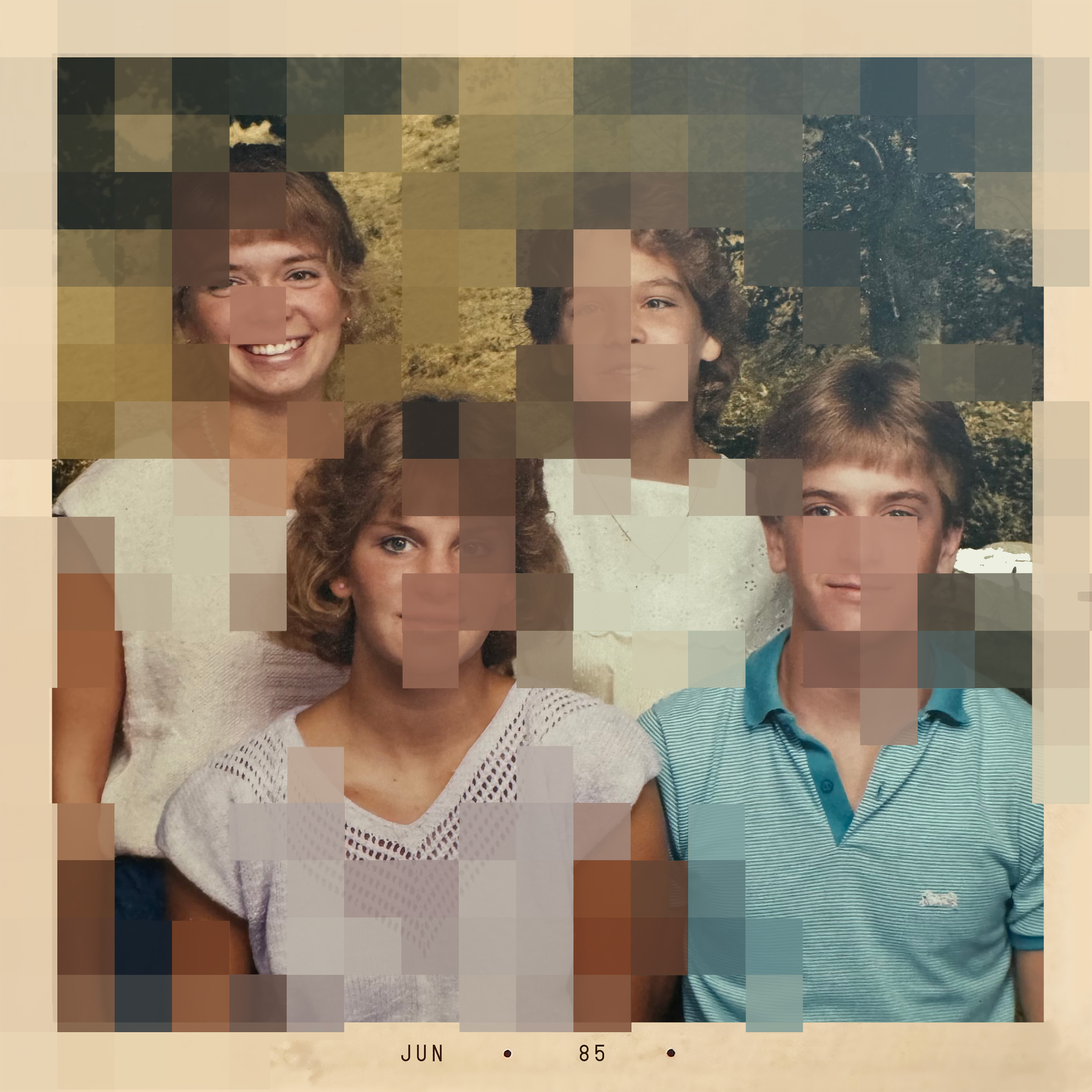
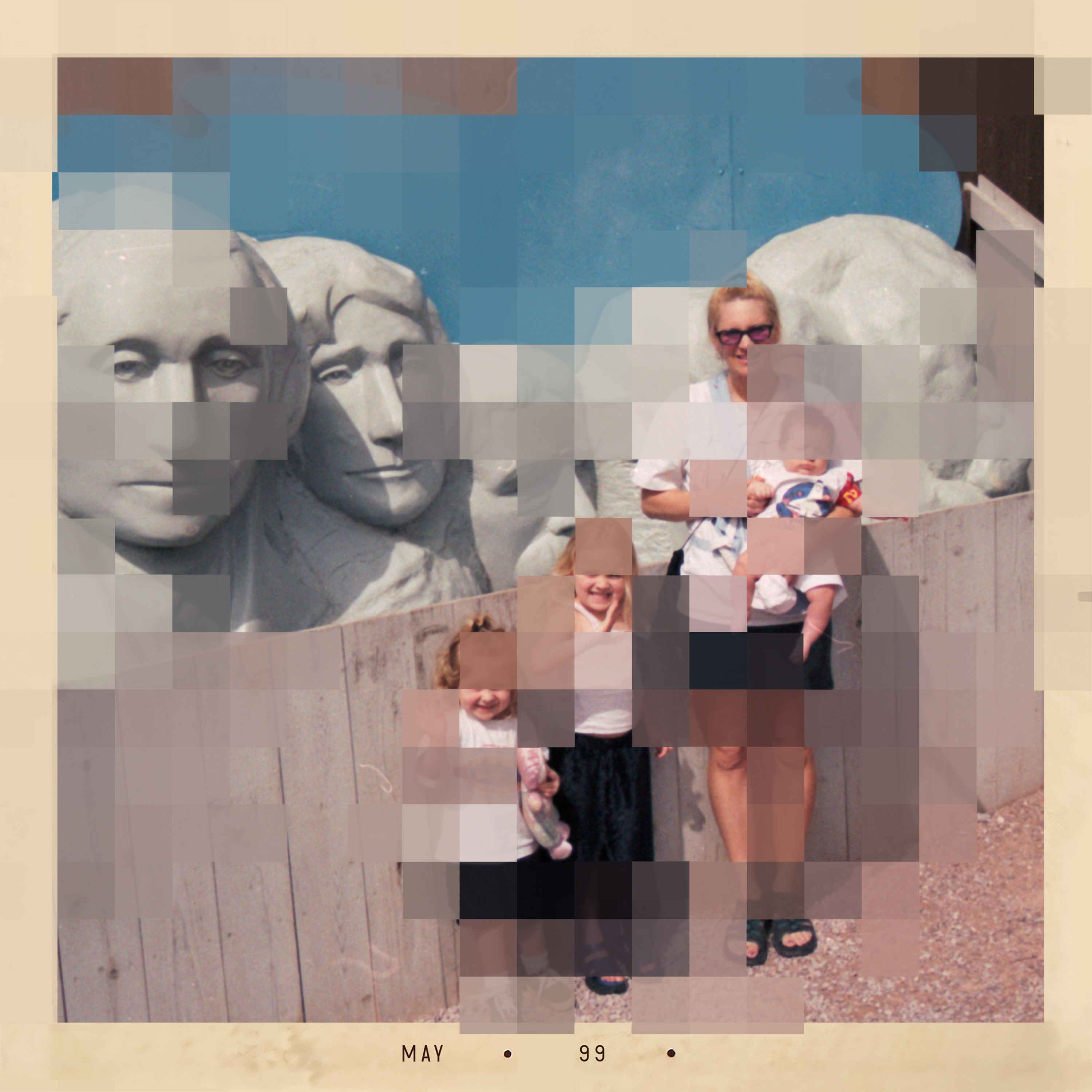
 Self-love
Self-love
Self-love is a journey filled with highs and lows, a continuous process of healing and hurt, especially for many women. Through my piece, I aimed to capture this ongoing struggle, reflecting how self-love is never linear but rather an evolving experience. Initially, I intended to explore self-love from a personal perspective, but engaging in critiques with classmates and colleagues broadened my understanding of its many interpretations.
One of the most profound insights came from a transgender woman I work closely with. She saw my piece as a representation of how someone had helped heal her heart after the pain of transitioning. The struggles of losing family and friends due to her identity made self-love a difficult but essential journey. The continuous line in my piece, which I originally viewed as a symbol of personal growth, resonated with her differently. She saw it as something holding her together—not as a restraint but as a gentle, supportive presence. This perspective deepened my appreciation for how art can transcend individual meaning, offering comfort and connection in ways I hadn't anticipated. It reinforced the idea that self-love, in all its forms, is both deeply personal and universally significant.
Connection
 This piece speaks to the deep, unspoken connections we share with others—the kind of bond where words aren’t always necessary, yet understanding flows effortlessly. It reminds me of those rare moments when you truly sync with someone, when your thoughts and emotions seem to intertwine without force or effort. The way the two figures lean into each other, their hands resting on one another’s heads, feels like a reminder of how powerful a genuine connection can be.
This piece speaks to the deep, unspoken connections we share with others—the kind of bond where words aren’t always necessary, yet understanding flows effortlessly. It reminds me of those rare moments when you truly sync with someone, when your thoughts and emotions seem to intertwine without force or effort. The way the two figures lean into each other, their hands resting on one another’s heads, feels like a reminder of how powerful a genuine connection can be.
It makes me think about the people in my life who have held space for me, those who have listened without judgment and understood me beyond words. The continuous lines between the figures feel like the invisible threads that tie us to those we love—delicate yet unbreakable. There’s a warmth in the colors, a softness in their embrace, as if to say, “I see you, I hear you, and I’m here.”
At its core, this piece reminds me that communication isn’t just about speaking—it’s about feeling, being present, and allowing someone to truly be seen. It’s a reflection of the kind of connection that makes us feel less alone in the world.